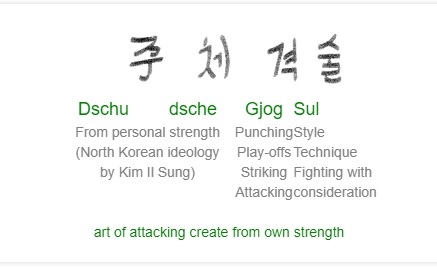Steven Lee
Blue Belt
North Korean Gyuksul, from Subak or Gwonbub or Sibak? Taekwondo is a mix of Chosun-Gwonbub (started 300 years ago by Korean Muyedobotongji textbook) gym & Karate gyms. However, Korea has had many other Fight Games, particularly street fighting games called Nalparam, Taekyun-Yetbub, Flag Fight (Gitssaum), Pyunssaum (side-fight), Sibak (side-fight). In medieval Jaemulbo book, Sibak was recorded to be also Taekyun, which would mean also being included in Taekyun. Murayama Jijun recorded Baksi & Nanjangbaksi, which were quite different from Taekyun. (Korean sometimes reverse the word order, like Baksi & Sibak.)
Korea had many street fighting games like this Gitssaum picture & written fist fighting description. I don't think there was any ban on Korean martial art by Japan. They probably just banned "unlawful" gathering. https://i.imgur.com/jaTY5Zr.jpg
Here's also something about street fighting contest in Korea 100 years ago. Prizefighting. https://i.imgur.com/i03RApC.png
For the record, Byungin Yoon who taught Gwonbub in South Korea was involved in Gyuksul development in North Korea.
North Korea has a fight game called Kyuksul. According to historical records referred by Mookas martial art magazine, "the earlier contests were about the same as boxing, but in 1987's 7th contest, it evolved to the level of kickboxing." Subak had punch. https://pbs.twimg.com/media/DnvIcdeXsAAQ2Ae.jpg
So, it says that Gyuksul was similar to boxing in the earlier era but it wasn't boxing. The only Fight Game or martial art that resembles such trait in Korea is Subak. That would mean Gyuksul was originally from Subak. In the new Gyuksul rules & techniques, Gyuksul also resembles Sibak (Korean street fighting games) & Gwonbub (Muyedobotongji).
https://i.imgur.com/aGQ9L8O.png
https://i.imgur.com/z7RaPQ2.png
https://i.imgur.com/Bs0T0Ij.png
Those 3 pictures are Gyuksul moves. They resemble Korean Muyedobotongji Gwonbub moves, except that Gwonbub's wild swing with shoulder-push uses vertical fist while Gyuksul uses horizontal fist. Those 3 pictures resemble the first 2 Gwonbub pictures in the first line in this picture. https://i.imgur.com/LwjGIti.png
So, in conclusion, North Korean Gyuksul started from Subak. Then it evolved to be like Sibak & Gwonbub.
Korea had many street fighting games like this Gitssaum picture & written fist fighting description. I don't think there was any ban on Korean martial art by Japan. They probably just banned "unlawful" gathering. https://i.imgur.com/jaTY5Zr.jpg
Here's also something about street fighting contest in Korea 100 years ago. Prizefighting. https://i.imgur.com/i03RApC.png
For the record, Byungin Yoon who taught Gwonbub in South Korea was involved in Gyuksul development in North Korea.
North Korea has a fight game called Kyuksul. According to historical records referred by Mookas martial art magazine, "the earlier contests were about the same as boxing, but in 1987's 7th contest, it evolved to the level of kickboxing." Subak had punch. https://pbs.twimg.com/media/DnvIcdeXsAAQ2Ae.jpg
So, it says that Gyuksul was similar to boxing in the earlier era but it wasn't boxing. The only Fight Game or martial art that resembles such trait in Korea is Subak. That would mean Gyuksul was originally from Subak. In the new Gyuksul rules & techniques, Gyuksul also resembles Sibak (Korean street fighting games) & Gwonbub (Muyedobotongji).
https://i.imgur.com/aGQ9L8O.png
https://i.imgur.com/z7RaPQ2.png
https://i.imgur.com/Bs0T0Ij.png
Those 3 pictures are Gyuksul moves. They resemble Korean Muyedobotongji Gwonbub moves, except that Gwonbub's wild swing with shoulder-push uses vertical fist while Gyuksul uses horizontal fist. Those 3 pictures resemble the first 2 Gwonbub pictures in the first line in this picture. https://i.imgur.com/LwjGIti.png
So, in conclusion, North Korean Gyuksul started from Subak. Then it evolved to be like Sibak & Gwonbub.
Last edited:

